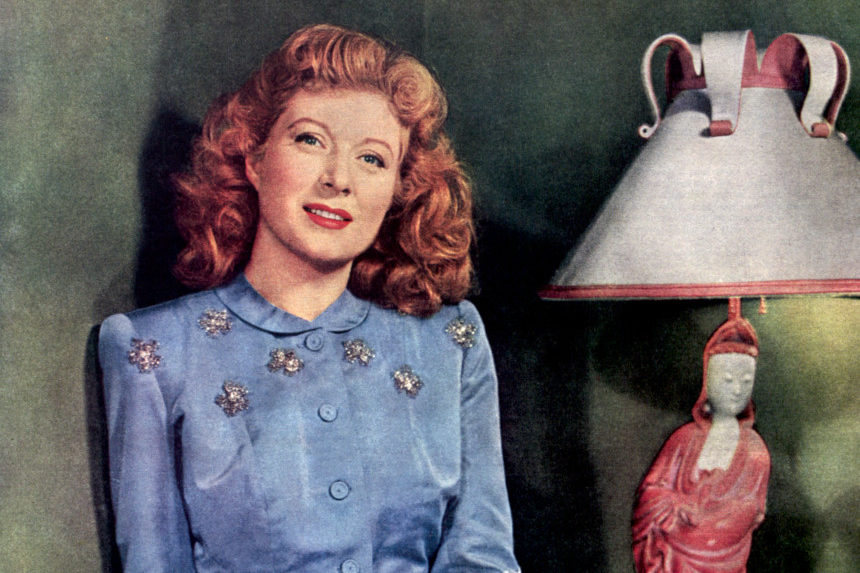Originally published December 28, 1946
Such high-powered morsels as Betty Grable, Hedy Lamarr, and Rita Hayworth can make the lads dissatisfied with their lot, but subconsciously they are aware that they wouldn’t quite know how to handle such feminine voltage even if it were wired into their own homes. Instinctively, however, a male beholder recognizes in Garson the girl he might have married, if only.
As for her female fans, Greer’s pictured bravery under adversity and the adoration she inspires in her screen husbands are qualities any woman admires. Watching Greer, she has the satisfaction of seeing her own virtues ideally portrayed on the screen, minus the erosion of dishwashing and diaper laundering.
Those citizens of Hollywood who have made up their minds not to like Garson crack that “Garson’s principal role is that of Garson.” The thought behind that snide slur is that she works even harder at being a film star off the set than she does on.
Yet the plain fact is she has yet to be mired in any scandal; she gets along at the studio without having to pout or stage stay-at-home strikes; she is canny with the money she earns; she sees socially only whom she pleases; she doesn’t throw huge parties, and is therefore not obligated to attend those thrown by others.
To top it all off, she’s fast with a quip. At an MGM sales luncheon in Chicago, she was introduced as Clark Gable’s costar in Adventure. The toastmaster spoke of Gable as “the man who put the ‘arson’ in Garson.”
Greer corrected him. “Let’s say, instead, Garson’s the gal who put the ‘able’ in Gable.”
—“Hollywood’s Fabulous Female” by Pete Martin, December 28, 1946
This article is featured in the January/February 2022 issue of The Saturday Evening Post. Subscribe to the magazine for more art, inspiring stories, fiction, humor, and features from our archives.
Featured image: Gene Lester, © SEPS
Become a Saturday Evening Post member and enjoy unlimited access. Subscribe now



